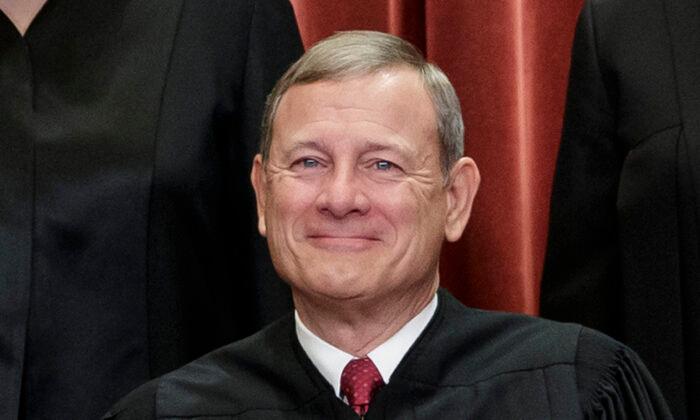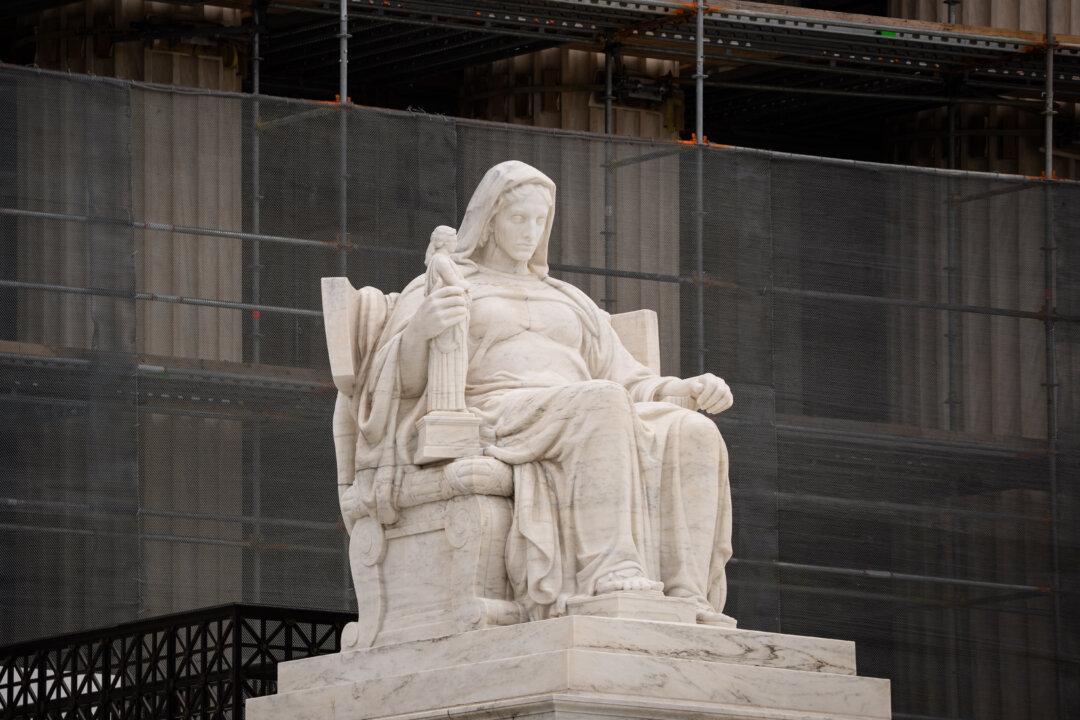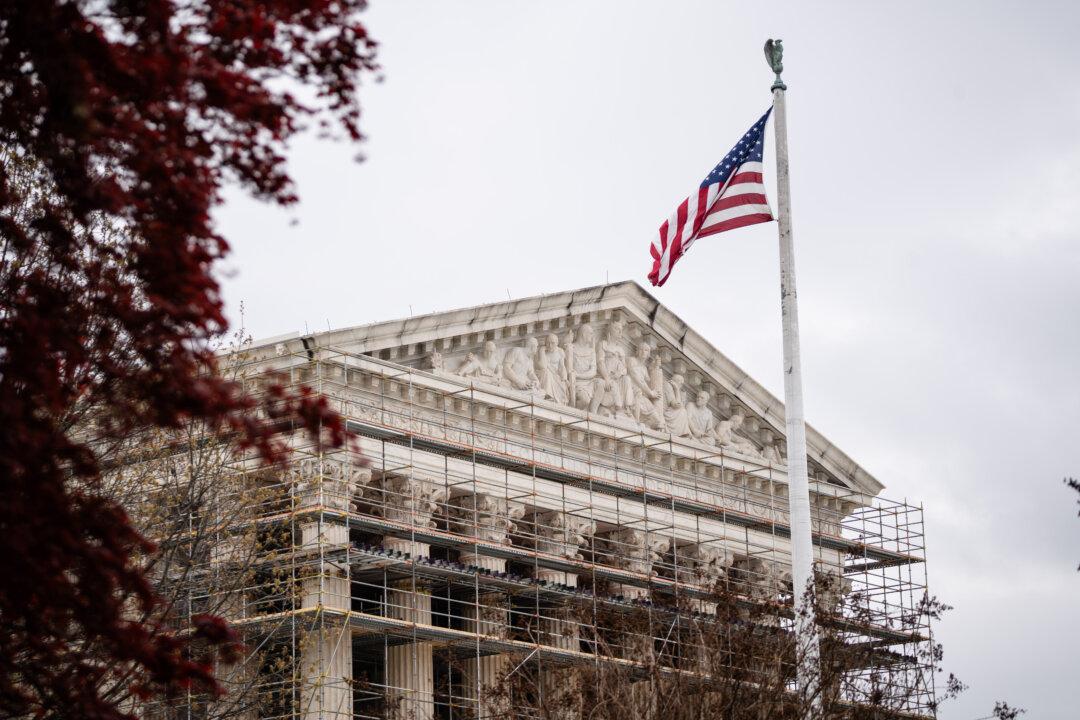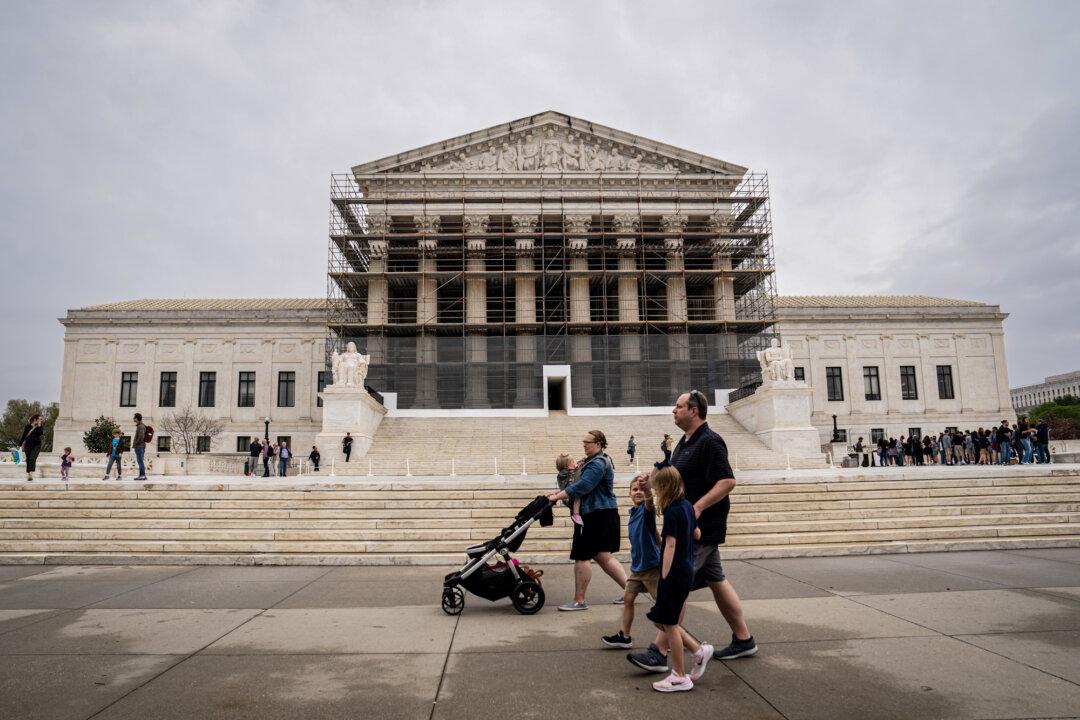Although portrayed as a conservative jurist for years, Chief Justice John Roberts has not behaved on the Supreme Court bench as his early supporters expected.
Roberts was appointed by President George W. Bush, but distrust of him by conservatives and constitutionalists goes back at least to his vote in NFIB v. Sebelius (2012), to save the Affordable Care Act, also known as the Obamacare law.
But Roberts’s jurisprudence seems to have taken a particularly hard turn to the left this past term, which ended last month, as he seems to be positioning himself as the new swing vote on the court after the famously unpredictable Justice Anthony Kennedy left it in 2018, according to experts consulted by The Epoch Times.
“I continue to believe that the Chief Justice is animated by a desire to avoid a public perception that the court is split along ideological lines, producing in the public mind predictable outcomes along rigid 5–4 majorities in politically controversial cases,” said Dan Stein, president of Federation for American Immigration Reform.
“He is doing this, in his mind, to protect the integrity of the court as an impartial and unpredictable interpreter of the law, especially if he believes that a rigid polarization will eventually produce an effort by Democrats to expand the size of the court.
“The result is that, ever since President Obama decided to lecture the justices on the Citizens United decision during a State of the Union address [in 2010], Roberts has been regularly willing to compromise principle and bend over backwards to find a way to join the liberal wing on certain types of cases.”
The brutal Senate battle over the confirmation of Justice Brett Kavanaugh in 2018 could not have given Roberts “any additional reassurance about the future,” Stein said.
“He essentially fears the political consequences on the perception and structure of the court itself if he allows the conservative majority to predictably dominate these cases.”
Glenn Reynolds, Beauchamp Brogan distinguished professor of law at the University of Tennessee College of Law, said Roberts seems to believe “his waffling reinforces the court’s legitimacy by keeping it from going too far from elite opinion.”
The approach may be backfiring, Reynolds said.
“The popularity of internet rumors that he’s being blackmailed, however, suggests that it’s not working as well as he thinks.”
Moin A. Yahya, a professor of law at the University of Alberta who studied law at Antonin Scalia Law School in Arlington, Virginia, shared his thoughts.
“The Chief Justice’s recent jurisprudence continues his trend towards a deference to the administrative state, exhibited in his vote for the Affordable Care Act. However, this deference isn’t consistently applied across the cases. One explanation may simply be a gauging of what is politically popular inside the beltway, which may explain some of his recent left-leaning votes.”
Curt Levey, a constitutional lawyer who is president of the Committee for Justice, told The Epoch Times, “Ever since the Obamacare decision in 2012, many of us have had our doubts about Roberts.”
Cases
Let’s look at some of the important Supreme Court decisions over the past year in which Roberts failed to do what conservative court-watchers hoped and expected him to do.In recent months, Roberts has come under attack by conservatives for holding in effect that there is a pandemic exception to the Constitution’s First Amendment religious protections.
In July, Roberts again sided with the four liberals to refuse a request from a Nevada church that it be allowed to carry on under the same conditions as secular businesses. This prompted a particularly sharp dissent from Justice Neil Gorsuch in which he concluded that: “The world we inhabit today, with a pandemic upon us, poses unusual challenges. But there is no world in which the Constitution permits Nevada to favor Caesars Palace over Calvary Chapel.” The vote in Calvary Chapel Dayton Valley v. Sisolak was 5–4.
On June 18, the court ruled 5–4 in Department of Homeland Security (DHS) v. Regents of the University of California, that the Trump administration failed to adhere to the Administrative Procedure Act (APA) in rescinding the Deferred Action for Childhood Arrivals (DACA) that temporarily shielded hundreds of thousands of young people who came to the United States illegally from being deported.
Roberts wrote the decision after siding with the court’s four liberal justices.
“The dispute before the Court is not whether DHS may rescind DACA. All parties agree that it may. The dispute is instead primarily about the procedure the agency followed in doing so,” the chief justice wrote.
What angered constitutionalist and conservative court watchers was that President Barack Obama created DACA in 2012 by executive action after saying repeatedly that such a policy change was beyond his powers as president. If Obama could create DACA with the stroke of a pen and without the consent of Congress, why couldn’t Trump rescind it the same way?
Roberts also wrote the court’s 5–4 opinion in Department of Commerce v. New York, issued June 27, 2019, in which the court rejected the administration’s rationale for asking individuals responding to the 2020 Census whether they are U.S. citizens, a question asked many times before in the decennial headcount. The chief justice sided with the four liberal justices, again citing the APA.
Justice Clarence Thomas objected. “The Court’s holding reflects an unprecedented departure from our deferential review of discretionary agency decisions,” he wrote in dissent. “And, if taken seriously as a rule of decision, this holding would transform administrative law.”
Under Roberts’s leadership, the court short-circuited a much-anticipated gun-control challenge known as New York State Rifle & Pistol Association Inc. v. City of New York, New York, finding April 27 that the issue was moot because the city changed the offending law. Justices Samuel Alito, Neil Gorsuch, and Clarence Thomas dissented, arguing that the law had violated the petitioners’ Second Amendment rights and that the case needed to be heard.
Then in June, the court unexpectedly took a pass on hearing a group of 10 cases, allowing controversial gun-control laws to remain in place. A ban on sporting rifles in Massachusetts and a ban on certain popular handguns in California were allowed to remain on the books.
Observers found these denials of certiorari difficult to accept given the court’s pro-gun-rights rulings in recent years. Under the court’s rules, four of the nine justices must vote to accept a case.
Roberts sided with the four liberal justices when he voted to strike down as unconstitutional a Louisiana requirement that abortionists have hospital admitting privileges close to where the procedure takes place. The plurality opinion in June Medical Services LLC v. Russo, issued June 29, was written by Justice Stephen Breyer. Roberts wrote his own separate concurring opinion agreeing with the result. Four conservative justices dissented.
“The idea that Roberts is a conservative is just silly,” said Levey of the Committee for Justice.
“Look, the left is much better at making your life miserable when you anger them,” he said.
“He knows that. Some of the justices thankfully are willing to weather the attacks, but he’s not.”
Levey challenged the notion that Roberts is some kind of institutionalist trying to protect the court from accusations of partisanship. “This raises the question, ‘Why is the court’s legacy better protected by liberal rulings rather than by conservative rulings?’”
Roberts is “worrying about his legacy, what the elite think of him.”
“Even if we give him the benefit of the doubt that it’s the legacy of the court he’s protecting, it’s not his job as a Supreme Court justice to balance the law against political and historical considerations, and I think that’s what makes Roberts even more disappointing [than Kennedy].”





